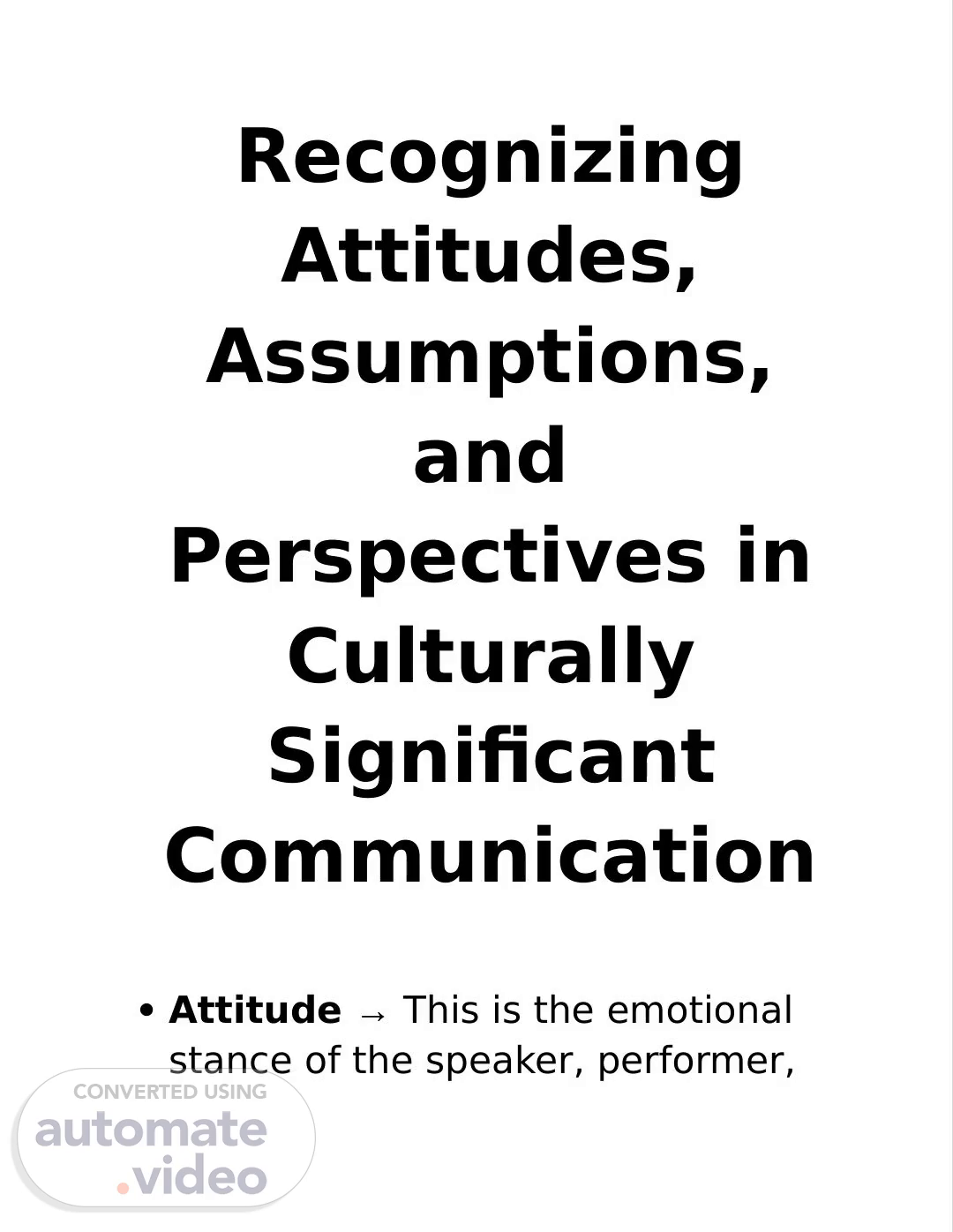Scene 1 (0s)
Recognizing Attitudes, Assumptions, and Perspectives in Culturally Significant Communication Attitude → This is the emotional stance of the speaker, performer,.
Scene 2 (21s)
or communicator. It can be approving, disapproving, neutral, or mixed. oExample: A politician’s speech that praises youth involvement shows a positive attitude toward young people. Assumption → This is an unstated belief or idea taken for granted. oExample: A news report saying “OFWs always sacrifice for their families” assumes that all Overseas Filipino Workers are motivated by family needs..
Scene 3 (1m 5s)
Perspective → This is the point of view shaped by culture, experience, or values. oExample: A cultural play about colonization may show the perspective of indigenous people rather than the colonizers. 2. Why Recognizing Them Matters Helps us become critical consumers of communication → we don’t just accept messages blindly. Builds cultural sensitivity → we understand that people’s words,.
Scene 4 (1m 49s)
actions, and art are shaped by their background. Prevents misunderstandings → we learn to see beyond stereotypes and recognize multiple viewpoints. Strengthens active citizenship → by analyzing communication, we can spot propaganda, bias, or manipulation. 3. Examples of Culturally Significant Communication 1. Speeches o Independence Day speech → Attitude: pride, unity. Perspective: nationalist..
Scene 5 (2m 31s)
o Campaign speech → Assumptions about poverty or youth may be revealed. 2. Media Broadcasts o News framing of a calamity → Attitude: sympathy or criticism. o Talk shows → Assumptions about gender roles, class, or lifestyle. 3. Cultural Performances o Festival dances → Perspective: pride in heritage, community identity. o Street plays → Attitude toward social issues like corruption or climate change..
